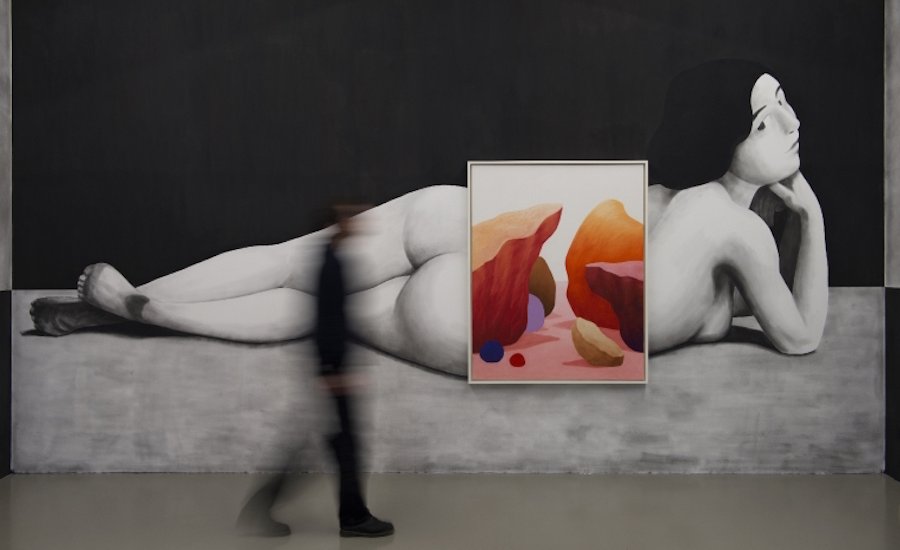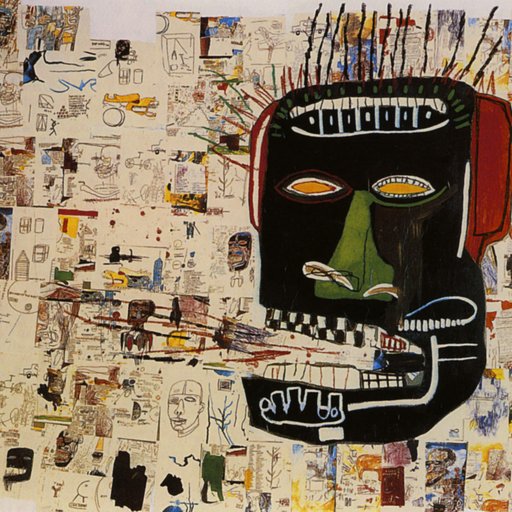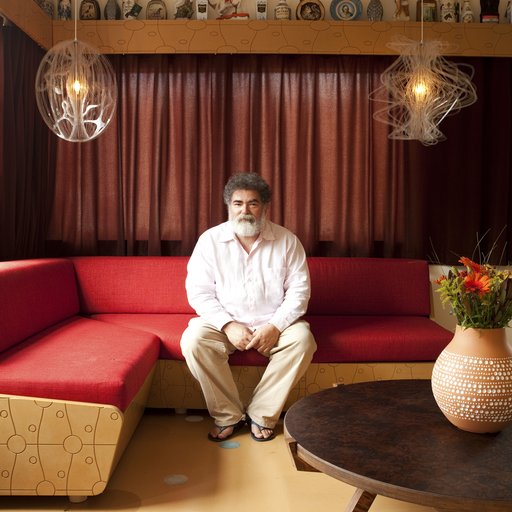What is Phaidon’s Vitamin P series, and why does it matter? To understand, it helps to look back to 2002, the year that the first edition was published. At the time, painting as a medium was widely seen as passé—outmoded by the more fashionable experiments in participatory art, video art, and other nontraditional approaches. One keeper of the flame, New York Times critic Roberta Smith, felt it necessary to declare that “painting” was still “very much alive” in the headline of one review. And it was. In fact, the medium was about to experience on of the greatest runs of glory and invention since the postwar eras of Abstract Expressionism and Pop.
It was this burgeoning generation of international painters that Phaidon set out to survey in the book, titled Vitamin P as a nod to the medium’s essential—if not central—place in the artistic diet. So how to determine which artists to include? Phaidon turned to the experts.
Of the prestigious pool of nearly 70 leading thinkers who nominated artists for the survey, there were nine sitting museum directors (among them the heads of the Pompidou, Tate Modern, Palais de Tokyo, and Haus der Kunst); the philosopher-critics Boris Gorys and Theirry de Duve; the director of Frankfurt’s influential Städelschule art school; the art critic Dave Hickey, Frieze editor Jennifer Higgie, and Texte zur Kunst editor Isabelle Graw; and the curators of that year’s dOCUMENTA, Gwangju Biennial, and following year’s Venice Biennale.
A look at the artists they selected, from the vantage of 2016, is astonishing. Many of the painters went on to staggering success. Peter Doig, for instance, saw his career surge with solo shows at Tate Britain and the Fondation Beyeler, together with spots in the Venice Biennale, Whitney Biennial, and Carnegie International; in 2007, he was briefly the most expensive living artist at auction.
Others who became sensations include Laura Owens, Marlene Dumas, John Currin, Kai Althoff, Francis Alÿs, Cecily Brown, Neo Rauch, and a Japanese painter who became one of the world’s most famous artists, Takashi Murakami. A collector who used Vitamin P’s table of contents as a shopping list would have stood to build a very valuable collection over the past decade and a half.
At the same time, some artists who were presciently featured in the book, like the Indian painter Bhupen Khakhar (who recently received a stellar Tate Modern show) and the German Pop artist Michael Majerus (whose estate is now represented by Mathew Marks), are only recently getting their posthumous due.
Nine years later, the second volume, Vitamin P2, introduced readers and collectors to a new generation of painters—and again defined the landscape of the medium at that time. Now-familiar names bruited in the book include Dana Schutz, Zhang Enli, Nicole Eisenman, Adrian Ghenie, Mickalene Thomas, Mark Grotjahn, Carmen Herrera, Wade Guyton, Sterling Ruby, Tauba Auerbach, Mark Bradford, and Hernan Bas.
Again, the volume’s uncanny foresight was born from its all-star lineup of global nominators, which counted among its experts two future dOCUMENTA curators, the two future Venice Biennale curators, and the heads of the Serpentine Galleries, the Stedelijk, the Studio Museum in Harlem, the Ullens Center for Contemporary Art, and other far-flung luminaries. It’s no accident, of course, that the figures who are able to make artists’ careers are perceptive about which ones are on the rise.
Since its debut, the Vitamin P series has carried the subtitle “New Perspectives in Painting,” and in the years that followed it’s clear that those perspectives have not only steered the medium of painting into the future, they have issued their own schools of eager imitators, followers, and heirs. With the publication of Vitamin P3, a new era of painting is hitting the historical canvas. Don’t let yourself be left out of the loop.



























